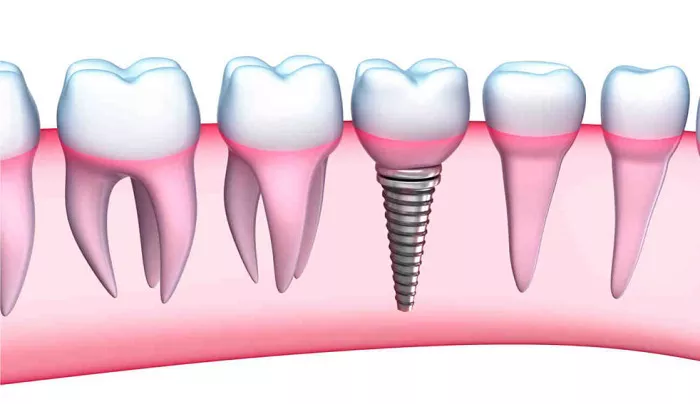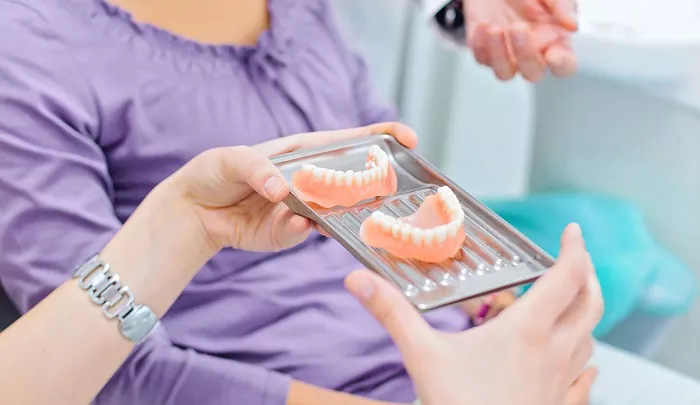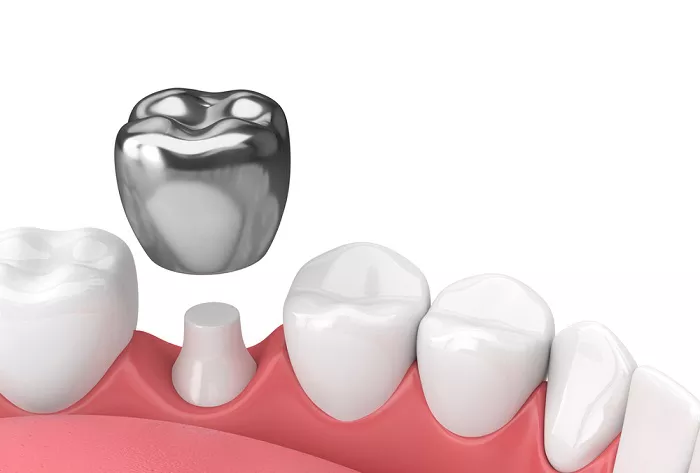dental crown material
1. Metal Alloys (Gold, Platinum, Palladium)
Gold crowns are among the most durable and long-lasting crowns available. These crowns are favored for their ability to withstand heavy chewing forces and their minimal wear on surrounding teeth. However, the metallic color makes them less desirable for visible teeth.
2. Porcelain or Ceramic
Porcelain crowns are ideal for patients who want the most natural-looking restoration. They are frequently used for visible front teeth, providing a lifelike appearance. These materials are highly customizable and can be color-matched to blend seamlessly with the surrounding teeth.
3. Zirconia
Zirconia crowns are one of the strongest options available, offering both durability and aesthetic appeal. They are ideal for patients who need both strength and appearance in a crown. Zirconia is often recommended for patients with bruxism (teeth grinding) due to its robustness.
crown type
1. Metal Crowns
Metal crowns, made from alloys such as gold, platinum, or a combination of metals, are one of the oldest and most durable types of crowns. They are highly resistant to wear, making them ideal for back teeth where pressure from chewing is greatest. Metal crowns are known for their longevity and strength, often lasting several decades.
Advantages:
Extremely durable and long-lasting
Requires minimal tooth reduction
Ideal for molars or teeth that are less visible
Disadvantages:
Less aesthetic due to their metallic color
Not suitable for visible teeth
2. Porcelain-Fused-to-Metal Crowns (PFM)
Porcelain-fused-to-metal (PFM) crowns combine the strength of metal with the aesthetic qualities of porcelain. A metal base is covered with a layer of porcelain to provide a natural appearance. These crowns are commonly used for teeth that need both strength and appearance, such as those visible when smiling.
Advantages:
Provides a more natural appearance compared to metal crowns
Suitable for both front and back teeth
Stronger than porcelain-only crowns
Disadvantages:
The metal base may show through at the gum line over time
Porcelain can wear down opposing teeth
Requires more tooth reduction than all-porcelain crowns
3. All-Porcelain Crowns
All-porcelain crowns are made entirely from dental ceramic material, providing the most natural-looking restoration. These crowns are often used for visible teeth because they can be customized to match the color and texture of natural teeth. All-porcelain crowns are an excellent option for patients with metal allergies.
Advantages:
Offers the best aesthetics, mimicking natural teeth
Ideal for front teeth and visible areas
Metal-free, suitable for patients with sensitivities
Disadvantages:
Less durable than metal or PFM crowns
Can be prone to chipping or cracking under excessive force
May require more tooth structure removal for a proper fit
4. Zirconia Crowns
Zirconia crowns are made from a strong, biocompatible material called zirconium dioxide, which is a type of ceramic. Zirconia is known for its strength, durability, and natural appearance. These crowns are often used for both front and back teeth.
Advantages:
Very durable and resistant to wear
Can be used for both front and back teeth
Offers a natural, tooth-like appearance
Biocompatible and suitable for sensitive patients
Disadvantages:
Requires more tooth reduction than some other materials
May not offer the same level of aesthetic translucency as all-porcelain crowns
5. Resin Crowns
Resin crowns are made from composite resins and are often used as a temporary or affordable option for patients who need a quick solution. These crowns are typically used for front teeth, as they are more prone to wear and tear.
Advantages:
Affordable and budget-friendly
Aesthetic appearance for front teeth
Easier to repair than porcelain or metal crowns
Disadvantages:
Less durable than other types of crowns
Can wear down or discolor over time
Not suitable for back teeth or heavy chewing
tooth crown cost
1. Type of Material
Metal Crowns: Typically range from $800 to $2,000.
Porcelain-Fused-to-Metal Crowns: Can cost between $1,000 to $2,500.
All-Porcelain Crowns: Usually range from $1,000 to $2,500.
Zirconia Crowns: Tend to be priced between $1,000 to $2,500.
Resin Crowns: Generally less expensive, costing between $500 to $1,500.
2. Geographic Location
The cost of dental crowns can also depend on the dentist’s location. Crowns in urban areas or high-cost-of-living regions may be more expensive than those in rural areas.
3. Insurance Coverage
Dental insurance may cover part of the cost of a crown, but many plans only cover a percentage or a portion of the total cost. Patients should check with their insurance provider to determine their level of coverage.
4. Additional Procedures
If additional treatments such as root canal therapy or tooth buildup are needed before the crown can be placed, these procedures will increase the overall cost.
dental crown procedure
Step 1: Initial Consultation and Examination
Before beginning the crown procedure, your dentist will assess your oral health, including the affected tooth. This may involve X-rays or 3D imaging to check the extent of damage or decay. The dentist will also review your medical history to ensure that a dental crown is appropriate for your needs.
If the tooth is severely decayed or broken, a filling or a root canal may be necessary before a crown can be placed. If the tooth structure is insufficient, additional build-up material may be added to provide a stable base for the crown.
Step 2: Tooth Preparation
To prepare the tooth for the crown, the dentist will first clean and remove any decayed or damaged portions of the tooth. Afterward, the tooth will be reshaped to accommodate the crown. This involves trimming the tooth down to make space for the crown to fit over it securely. If a large portion of the tooth is missing, the dentist may use a dental material to build up the tooth’s structure, providing a solid foundation for the crown.
The dentist may numb the area using a local anesthetic to ensure that the procedure is comfortable and pain-free. Once the tooth is prepared, an impression is made using either a digital scanner or a traditional mold to create a detailed model of the tooth and surrounding area.
Step 3: Temporary Crown
While the permanent crown is being fabricated, a temporary crown will be placed to protect the prepared tooth. Temporary crowns are typically made from acrylic or composite resins and are designed to fit snugly over the tooth. They will remain in place until your next appointment, when the permanent crown is ready for placement.
Step 4: Crown Fabrication
Once the impression is taken, the dental laboratory will fabricate the permanent crown based on the mold. The time required to create the crown varies depending on the material used and the complexity of the design, but it typically takes between one to two weeks.
If the dental practice offers same-day crowns, advanced technology such as CAD/CAM (Computer-Aided Design/Computer-Aided Manufacturing) may be used to create the crown on-site. This technology allows for precise measurements and rapid fabrication.
Step 5: Final Placement
At the follow-up visit, the dentist will remove the temporary crown and check the fit and appearance of the permanent crown. The dentist will ensure that the crown fits properly, aligns with your bite, and looks natural. If necessary, minor adjustments may be made to ensure optimal comfort and function.
Once the fit is confirmed, the permanent crown is securely bonded to the tooth using a strong dental adhesive. The dentist will verify that the crown is in place and that you are comfortable with the results.



